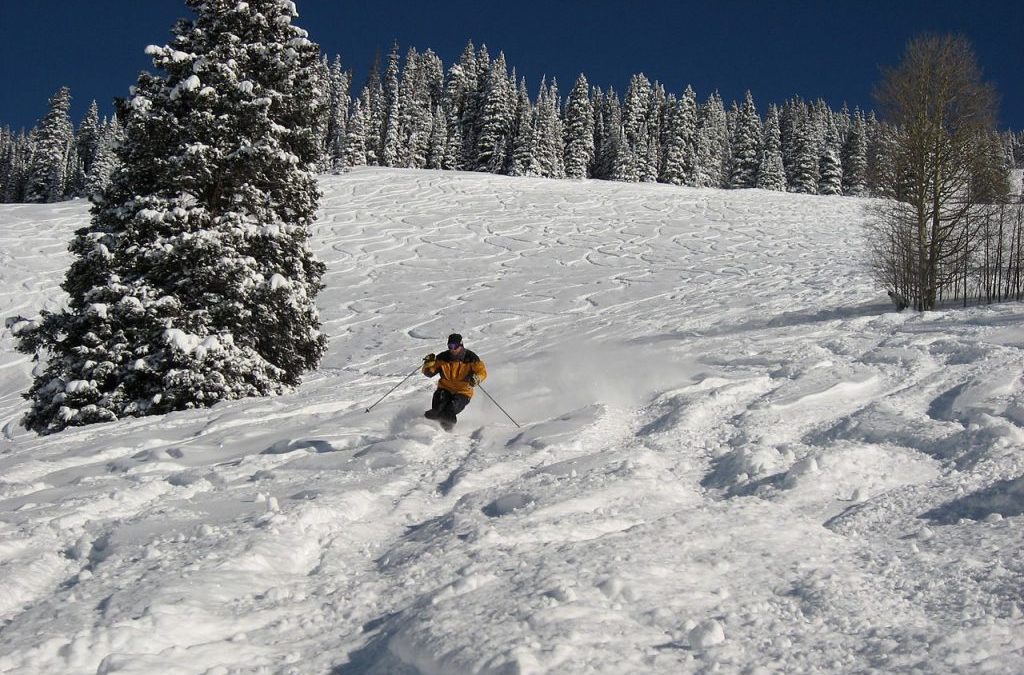Ski resorts in Colorado performed better this October than they did last year, an optimistic sign heading into the peak winter travel season.
Resort owners may want to hold off on financial celebrations, however.
Colorado resorts significantly outperformed the overall U.S. hotel industry last month, posting a nearly 26 percent increase in revenue per available room — the hotel industry’s key performance metric — since October of 2019, according to STR. U.S. hotels saw a more than 49 percent average decline in revenue per available room during October. Colorado’s off-season ski resort growth stems from travel trends favoring leisure markets and outdoor-focused destinations during the pandemic.
But rising coronavirus case counts threaten the strong performance longevity.
“There’s a big asterisk next to all this, and that’s the ski resorts being able to stay open and not have government-mandated shutdowns,” said Patrick Scholes, managing director of lodging and leisure equity research at Truist Securities.
A nearly 19 percent increase in daily rates and almost 6 percent rise in occupancy drove the sharp rise in Colorado ski resort revenue.
Even the popular Whistler-Blackcomb region of Canada, where borders are largely shut off from the international travelers who pack these resorts each winter, moderately outperformed the North American average. Whistler’s 42 percent decline in revenue per room was less than the more than 45 percent North American average.
The more significant performance gains in Colorado come at the same time coronavirus cases are surging across the U.S. Municipal and state governments from coast to coast are rolling back various reopening plans in cities, and ski resorts could be next.
Vermont, another popular ski destination, requires travelers to complete either a 14-day quarantine or a seven-day quarantine followed by a negative test in their home state before their arrival. Those who don’t comply are asked to complete a 14-day quarantine or a seven-day quarantine followed by a negative test at wherever they are staying in the state.
Several counties in Colorado are also now in a “red phase” with the threat of the virus, which would normally call for a stay-at-home order. State leaders have since added a more extreme “purple phase” to the end of their threat spectrum while red-phase counties are able to still maintain some degree of business operations.
“Ski demand is going to be there, but it’s going to be dictated by the restrictions these states put out to control the virus,” said Bruce Tracey, a professor at Cornell University’s School of Hotel Administration.
Ski resort towns performed generally well during warmer months, as drive-to and leisure travel demand led the recovery from record-low occupancies seen in April. Leaders at companies like Four Seasons Hotels and Resorts saw high demand for properties in markets like Vail, Colorado, and Jackson Hole, Wyoming.
Colorado markets like Vail and Breckenridge expanded their tourist appeal in normal travel years to warmer months by adding various festivals and outdoor activities. But there are still traditional revenue streams in the winter, particularly in food and beverage, that may hinder how strong a season it can be this year — even if there are plenty of people craving the slopes.
“People want to be outside and away from others when they can,” said Sean Hennessey, a professor at New York University’s Jonathan M. Tisch Center of Hospitality. “I think that will continue into the winter, but it remains to be seen how difficult it’s going to be for the resorts to maintain low Covid numbers, particularly when there’s the après ski and people being together indoors.”
Skiing is generally a safe social distancing activity, with masks already a pre-pandemic necessity before whipping down frigid ski slopes. But ski passes are only one part of the revenue pie. Après ski, or after-skiing, activities typically drive bar and restaurant tabs sky-high within a resort. Those numbers are expected to be significantly less this year, even if resorts are allowed to remain open due to capacity restrictions during the pandemic.
Experts expect that trend is already underway, even at resorts posting strong revenue per room figures during October. Meetings and events, another key source of off-season revenue, are largely curtailed due to capacity restrictions.
“It doesn’t surprise me [October was] a substantive gain, but if you peered back into it a little bit more and looked at other things going on, it may not paint the rosiest picture,” Tracey said.
Optimistic vaccine news from Pfizer and Moderna are just as good for the ski resorts as it is for the wider travel industry. But it is still a waiting game, with this winter likely to be the worst financially from the pandemic before more normalized operations are possible a year from now.
“Of course, all of that assumes Mother Nature is going to cooperate,” Tracey said.
This content was originally published here.
